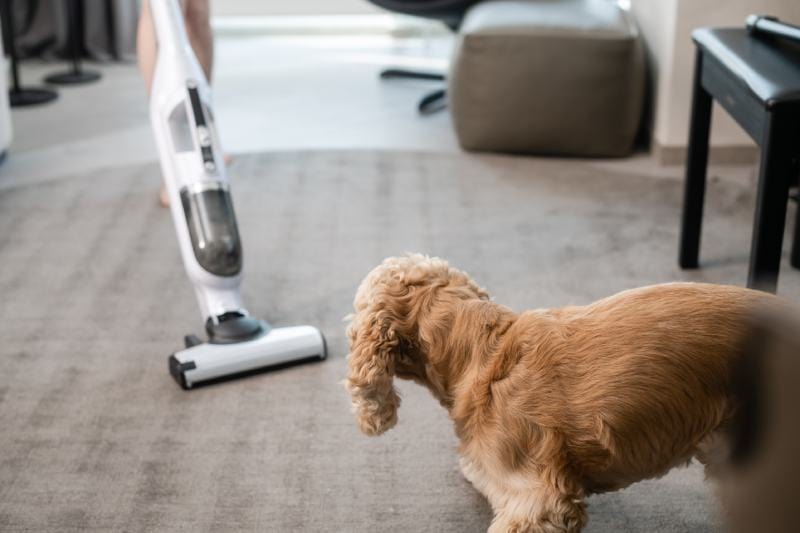What Are Normal Cat Vital Signs? Vet Approved Tips On How Yo Measure Them

Updated on
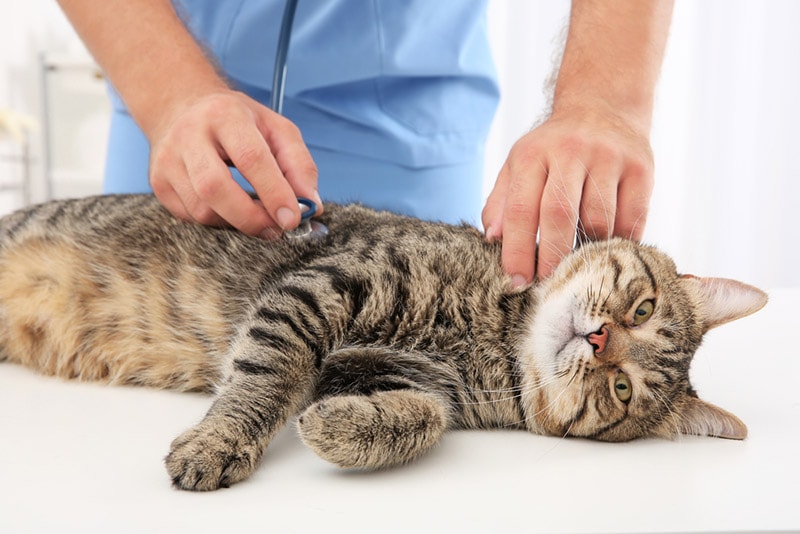
Click to Skip Ahead
As a responsible cat owner, keeping an eye on your feline friend’s health is essential. One of the best ways to do this is by monitoring their vital signs. We want you to be well-informed on this matter, so be sure to follow our step-by-step guide.
Here, you will learn how to measure your cat’s vital signs, including temperature, heart rate, and respiratory rate. Familiarizing yourself with your cat’s normal vital signs can help you identify when something is off and ensure prompt veterinary attention when necessary. Normal vital signs in cats include a temperature that ranges between 100.4°F–102.5°F (38°C–39.1°C), a heart rate of 160-120 beats per minute, and a respiratory rate of 20-30 breaths per minute.
Preparation
Before jumping right in, you want to make sure you’re all set to proceed. It’s not overly complicated, but you’ll want to ensure you take your time and do it right. Here’s what you need to know:
1. Gather the Necessary Supplies
To measure your cat’s vital signs, you’ll need a few basic supplies, such as a digital thermometer, a stopwatch or timer, and a notepad or device to record your findings.
2. Choose a Calm, Quiet Environment
To get accurate measurements, it’s essential to create a calm and quiet environment for your cat. Choose a comfortable spot in your home, away from loud noises or distractions.
What Should a Cat’s Heart Rate Be for Vital Signs?
First things first: it’s critical to familiarize yourself with normal vital signs—you need to know what’s normal for your cat. You’ll also find the normal ranges for temperature and respiratory rate below:
- Temperature: 100.4°F–102.5°F (38°C–39.1°C)
- Heart Rate: 160–210 beats per minute (bpm)
- Respiratory Rate: 20–30 breaths per minute (brpm)
Keep in mind that these are just general guidelines, and individual cats may have slightly different normal ranges based on age and overall health. Your cat’s recent physical activity and stress levels will impact these measurements as well. If in doubt, always contact your vet for advice.
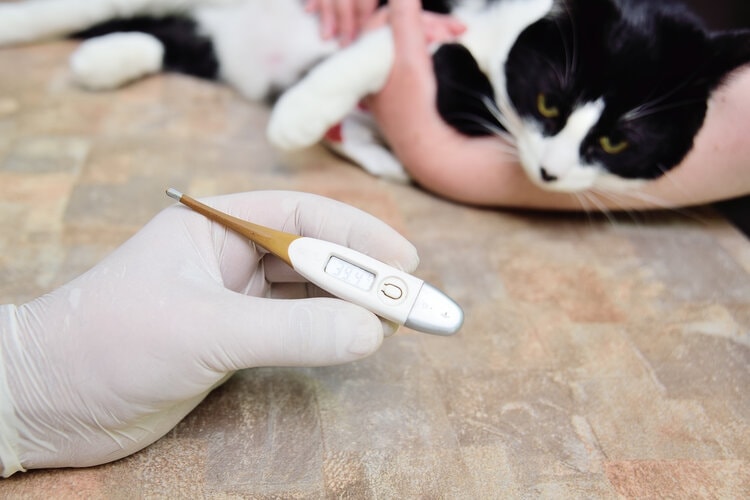
How to Measure a Cat’s Vitals Step-by-Step
Before starting, observe your cat’s behavior to ensure they are relaxed and not stressed. If your cat seems agitated, it may be best to postpone measuring their vital signs.
1. Measure Your Cat’s Temperature
For many cat owners, the most dreaded part of checking vitals is inserting the thermometer into the cat’s butt (rectally). But if you go in knowing what to do and what to look for, you’ll find it’s much easier to accomplish the task at hand. At home (and also done in some clinics), the easiest way to take a cat’s temperature is using a reliable digital thermometer that you insert into your cat’s ear. You can get human ear thermometers or ones designed specifically for use on cats and other pets. It should be easier to try sticking the end of the thermometer in the ear than in the rectum. Depending on your cat’s level of cooperation or if you have another pair of hands, you can use rectal measurements, since to date, they remain the gold standard for cats.
- Choose the Right Thermometer: Use a digital thermometer and avoid mercury-in-glass thermometers, which give slower results and pose a risk due to potential breakage of the glass and mercury release. Do not use this thermometer with any other members of the family.
- Lubricate the Thermometer: Apply a small amount of petroleum jelly or water-based lubricant to the tip of the thermometer. This will make the insertion more comfortable for your cat.
- Hold Your Cat Securely: Gently hold your cat in your lap or on a flat surface, with one hand on their chest to keep them secure.
- Insert the Thermometer: Using gloves, carefully insert the thermometer into your cat’s rectum, about 1/2 to 1 inch (or 1 to 2 cm) deep. Hold the thermometer in place while your cat remains still.
- Wait for the Reading: Most digital thermometers will beep when they have taken an accurate reading. This typically takes around 10 to 30 seconds.
- Wash and Store the Thermometer: Use warm water and disinfectant soap to wash your thermometer. Store it separately from any thermometers used for humans. Thoroughly wash your hands and the sink where you washed the thermometer. Avoid using your kitchen sink for this purpose.
And that’s it! The last thing you need to do is record the temperature. Note down your cat’s temperature in your notepad or device and save it for reference.
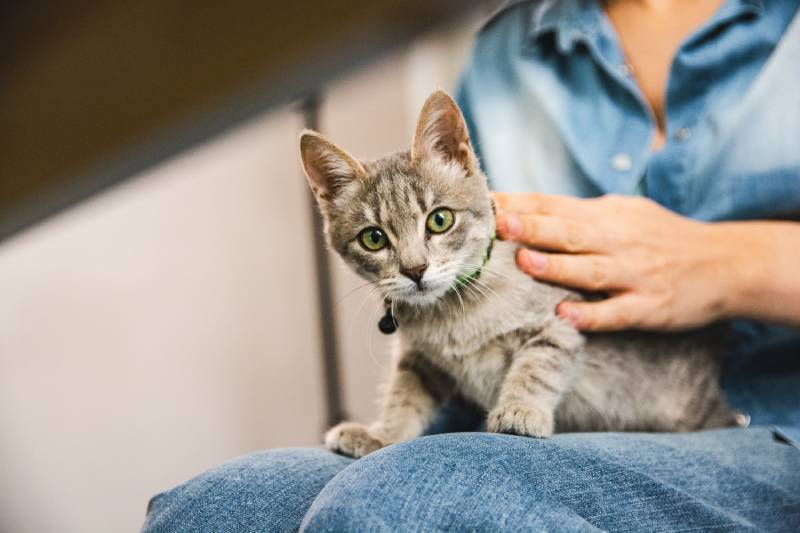
2. Measure Your Cat’s Heart Rate
Comparatively, this vital check-up is much easier for most cat owners. Follow the steps below to ensure that you perform it correctly—you want to be certain that you have as accurate a reading as possible.
- Locate Your Cat’s Heartbeat: Place your hand on your cat’s left side, just behind their front leg. You should be able to feel their heartbeat.
- Use a Stopwatch or Timer: Set a stopwatch or timer for 15 seconds.
- Count the Beats: Count the number of heartbeats during the 15-second period.
- Calculate the Heart Rate: Multiply the number of heartbeats by 4 to obtain the heart rate in beats per minute (bpm).
As with temperature, you want to be sure to record the heart rate. Heart rate can vary greatly depending on how relaxed your cat is. If your cat is relaxed, it should be at the lower end of the scale, and when cats are at home, they tend to have considerably lower heart rates than when they are at the vets. According to a 2005 study, 132 bpm is the average heart rate for cats at home. Once you’ve recorded your cat’s heart rate, you’re ready to move on to the next check-up.
3. Measure Your Cat’s Respiratory Rate
If you’re comfortable performing a heart rate check, you’ll have no problems checking your feline’s respiratory rate. We’ve outlined the steps below for you to follow.
- Observe Your Cat’s Chest: Watch your cat’s chest as they breathe ideally while they are at rest.
- Use a Stopwatch or Timer: Set a stopwatch or timer for 15 seconds.
- Count the Breaths: Count the number of times your cat’s chest rises and falls during the 15-second period. Each rise and fall counts as one breath.
- Calculate the Respiratory Rate: Multiply the number of breaths by 4 to obtain the respiratory rate in breaths per minute (brpm).
Lastly, make a note of your cat’s brpm, as this will help you to track any changes in their breathing over time. If the rate is significantly lower or higher than usual, be sure to consult your vet. It could be a sign of an underlying issue that needs to be addressed.
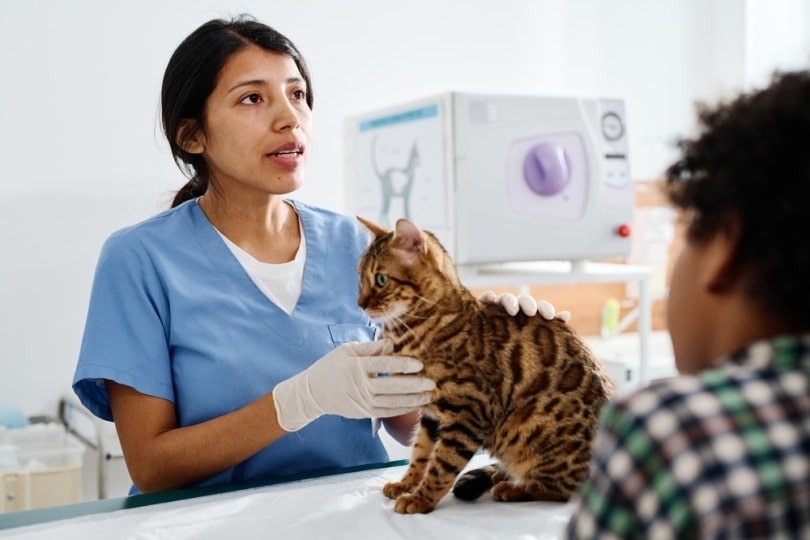
After Measuring Vital Signs
Upon completing each check-up, monitor and compare the results. This is why it’s a good idea to keep track of your cat’s vital signs over time. Regular monitoring can help you detect any changes or abnormalities that could indicate a health issue.
If you notice any significant changes in your cat’s vital signs, or if they are outside of the normal ranges, consult your veterinarian for further evaluation and advice. Taking these steps can help you keep your cat healthy and feeling their best.
Conclusion
Monitoring your cat’s vital signs is important to maintaining their overall health and well-being. By following this step-by-step guide, you can measure your cat’s temperature, heart rate, and respiratory rate accurately and efficiently.
Regular monitoring will allow you to detect any changes or abnormalities, ensuring that your feline friend remains happy and healthy. Always consult your veterinarian if you have any concerns about your cat’s health or vital signs.
Featured Image Credit: Africa Studio, Shutterstock





